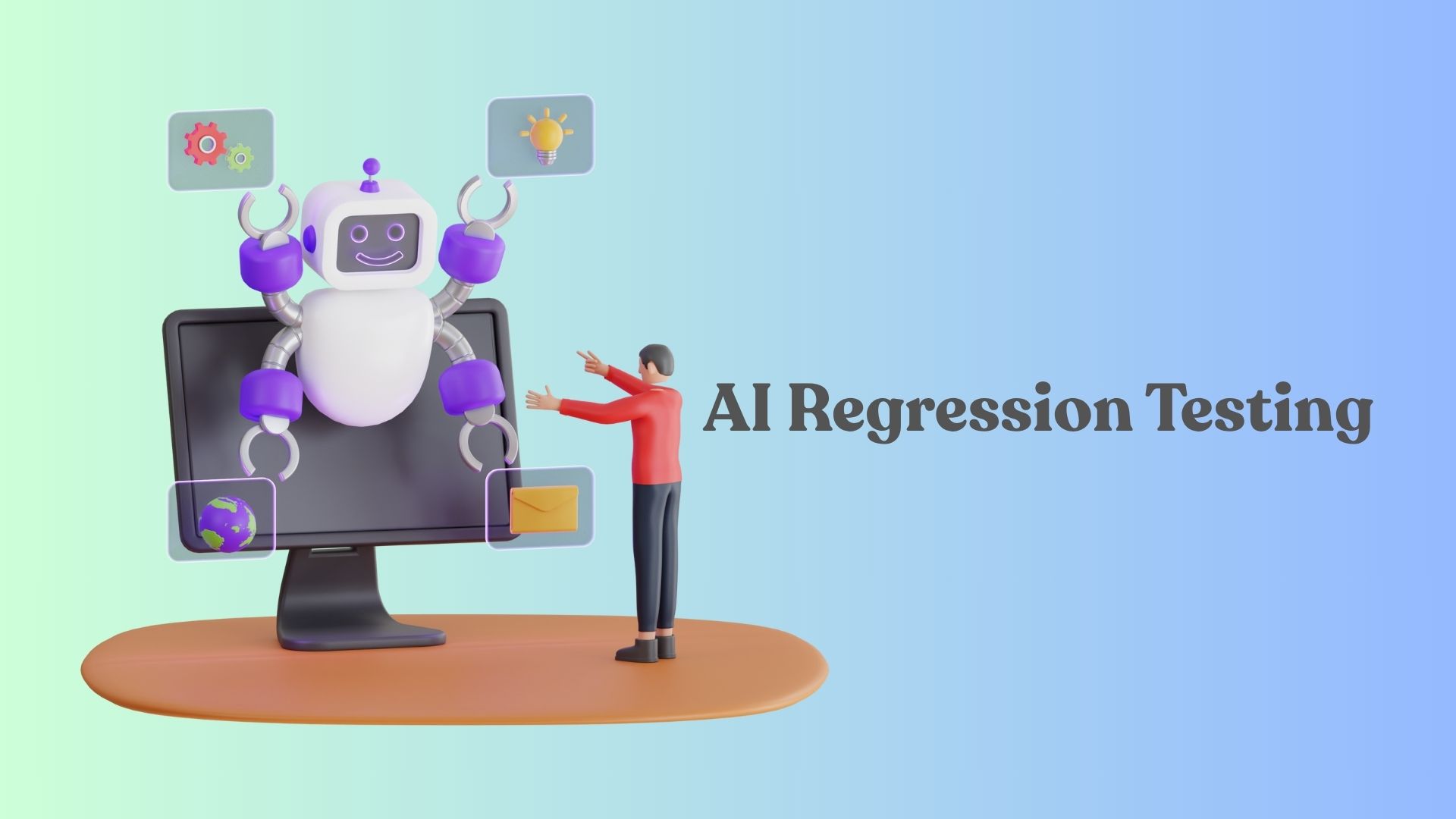AI in Finance Statistics By Market Size, Adoption, Use Cases, Trends and Facts (2025)
Updated · Nov 24, 2025
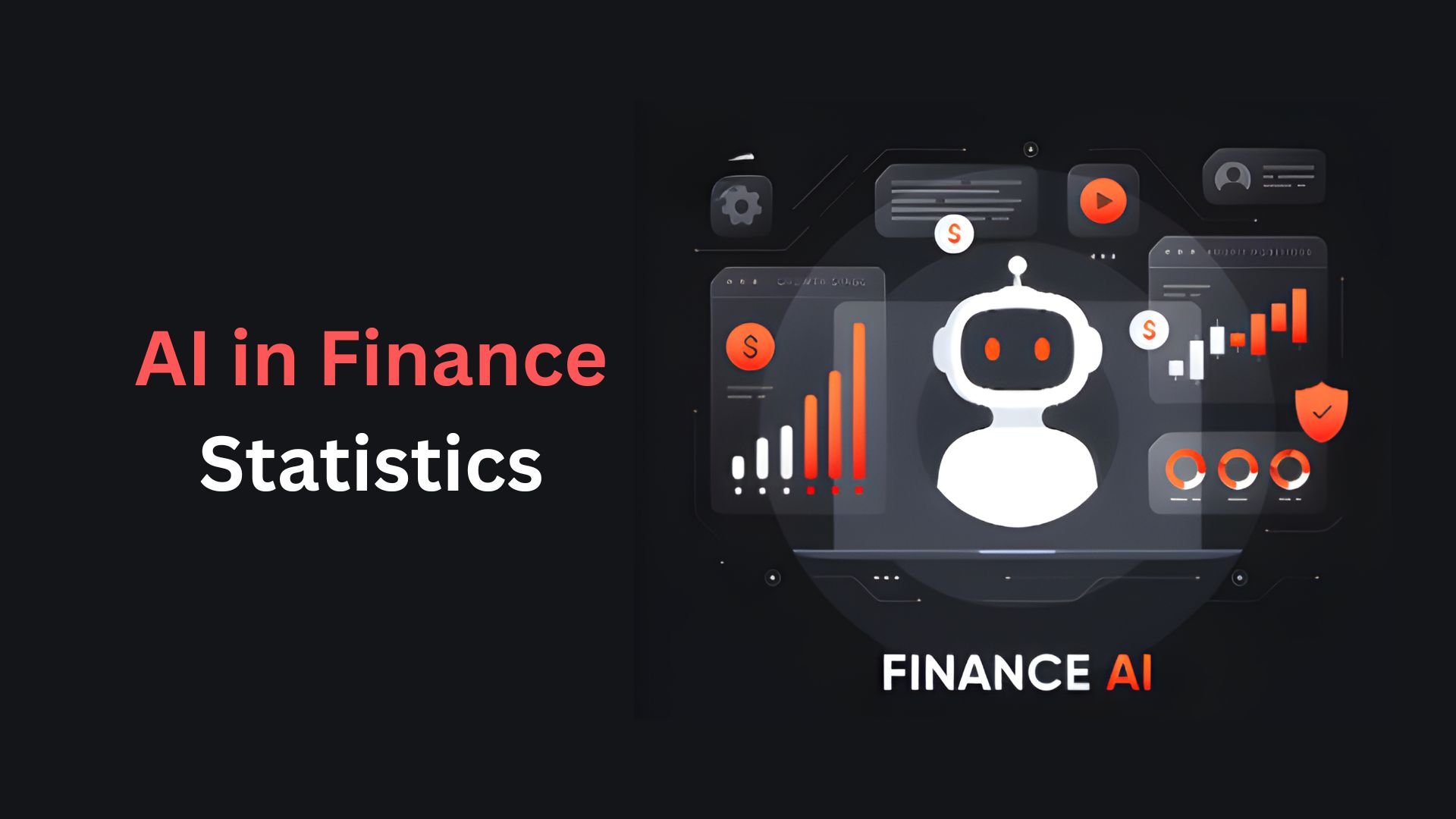
Table of Contents
- Introduction
- Editor’s Choice
- General Statistics
- AI in Finance Market Size
- AI Adoption in Finance Comparison Between 2022 and 2025
- GenAI Adoption Areas in Financial Services
- Barriers to Generative AI in Finance
- AI/ML for Financial-Crime Detection Analyses
- Main Benefits of AI in the Finance Sector
- Key Adoption Rates in the Finance Industry
- Top AI Use Cases in Finance (Excluding China)
- AI Patent Trends in Banking and Fintech
- AI Agents in Finance Statistics
- Economic Impact of AI in Finance,
- Conclusion
Introduction
AI in Finance Statistics: AI in finance is moving from tests to real work. Banks, payment firms, traders, insurers, and wealth managers now use it daily. This article shares clear numbers: market size, adoption, and spending. It also shows results: higher fraud catch rates, better credit decisions, proven risk models, more back-office automation, faster trades, and ROI by task.
You will see views by region and by type of business, like retail, corporate, capital markets, and insurance. Workflows include KYC/AML, collections, underwriting, portfolio analytics, and customer support. We cover new tech like foundation models, agentic workflows, RAG, synthetic data, and model risk controls. We also note limits: bias, privacy rules, security risks, and skill gaps. The goal of this article is a simple, data-first guide to scale safely and profitably.
Editor’s Choice
- According to market.us, the global market size of AI in Finance is expected to reach around USD 17.7 billion by 2025, increasing from USD 14.8 billion in 2024.
- In 2024, around 60% of financial institutions are expected to use AI for fraud detection.
- A report published by Pigment estimated that by 2026, 90% of finance teams globally will run at least one AI-enabled tool.
- By 2025, AI Adoption will not be used in cases, and pilot usage will drop by 3% and pilot ease to 10%.
- The highest adoption or active development of generative AI is in customer service (59%), software code development/IT (56%), and operations (55%).
- Uncertainty around regulation is known to be the highest barrier stated by 43% of finance companies, followed by quality and accuracy concerns (42%) and data security & privacy (39%).
- As mentioned in biocatch.com, across banks and financial services, AI/ML is mainstream, with 94% already using it, while 22% expect adoption within six months, globally.
- NVIDIA’s 2024 financial services survey says 43% of professionals already see operational-efficiency gains from AI, and 42% say it has built a competitive advantage.
- AI use in finance has shot up from 45% in 2022 to a projected 85% by 2025.
- PatentPC reports that over 60% of financial institutions are putting money into AI and machine learning tools.
- According to the Seller Commerce survey, around 69% respondents said they use AI mainly for data analytics, with data processing (57%) next.
- AI is set to reshape finance by 2030, with analysts projecting about USD 1 trillion in added value.
General Statistics
- According to market.us, in 2024, around 60% of financial institutions are expected to use AI for fraud detection.
- Looking to 2025, around 50% of customer service in finance may be handled by AI systems.
- In 2023, roughly 70% of trading volume ran on AI algorithms.
- People worry about privacy, with 65% concerned about how their financial data is used and protected.
- AI tools that read market trends and risks are rising in value; 45% of institutions plan to invest in predictive analytics by 2025.
- Automating middle office work could save North American banks USD 70 billion.
- By 2028, 75% of finance leaders expect agentic AI to be routine.
- Approximately 70% of CFOs say AI helps teams work faster and deliver more, yet two-thirds admit weak data foundations slow progress.
- Only 18% of companies have governance committees, while 85% of finance leaders prioritize AI skills.
- Moreover, 1 in 5 financial teams report ROI above 20%.
- Leading groups operate 10 to 11 use cases at once, and 87% of reinvention-ready firms excel at process mining and benchmarking.
- Vendor partnerships meaningfully boost AI success rates by 5%.
AI in Finance Market Size
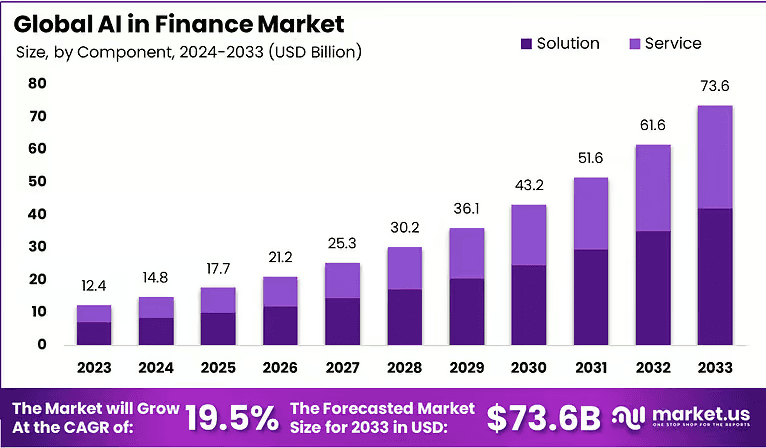
- The global market size of AI in Finance is expected to reach around USD 17.7 billion by 2025, increasing from USD 14.8 billion in 2024.
- The market will grow at a CAGR of 19.5% from 2024 to 2033, resulting in USD 73.6 billion by the end of 2033.
- In the coming years, the market size will reach USD 21.2 billion (2026), USD 25.3 billion (2027), USD 30.2 billion (2028), USD 36.1 billion (2029), USD 43.2 billion (2030), USD 51.6 billion (2031), and USD 61.6 billion (2032).
AI Adoption in Finance Comparison Between 2022 and 2025
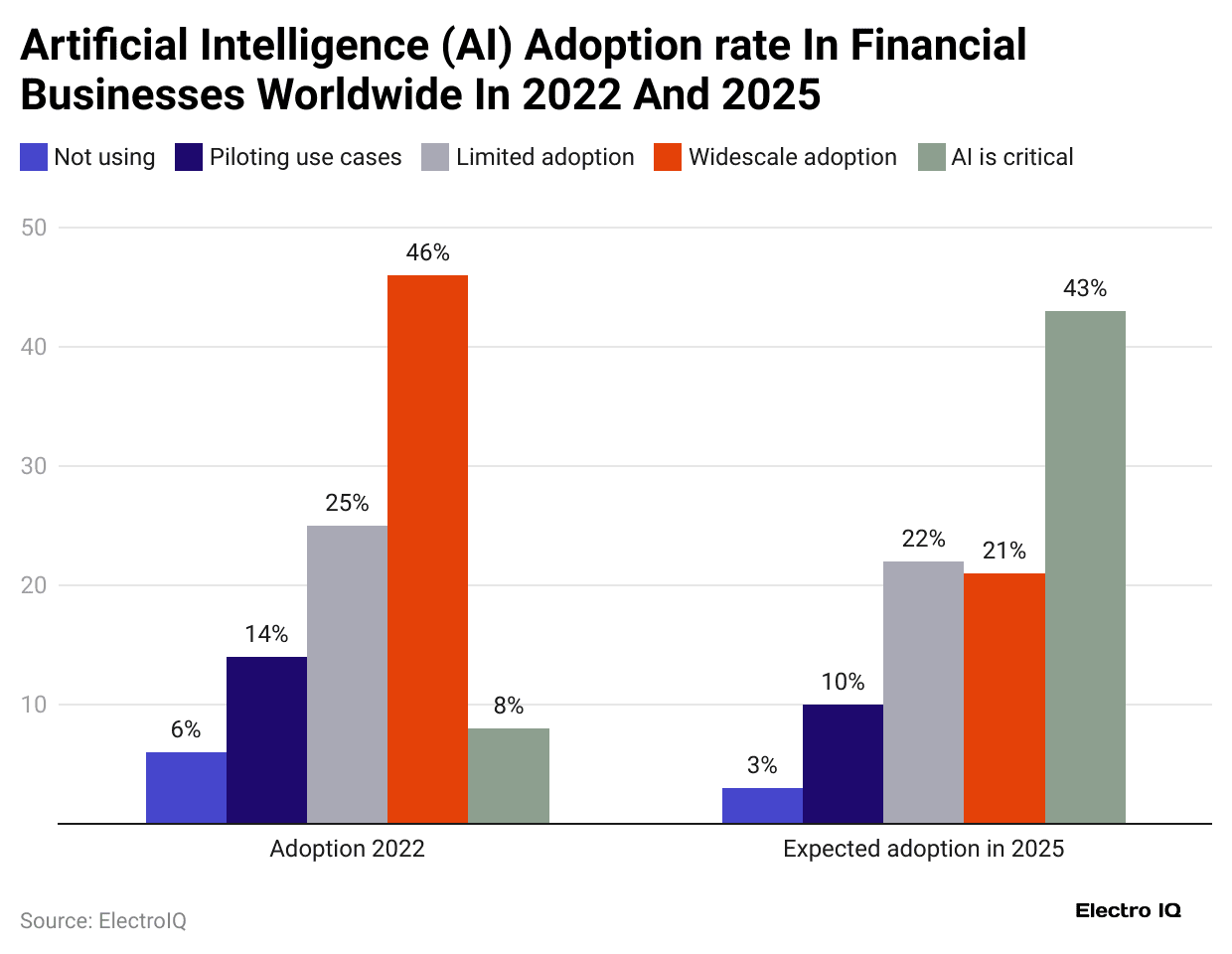
- In 2022, only 6% of financial firms said they weren’t using AI, while most were already scaling it: 46% reported widespread adoption, 25% had limited use, 14% were still piloting ideas, and 8% saw AI as mission-critical.
- By 2025, “Not using” drops to 3% and pilots ease to 10%.
- Limited adoption declines to 22% as more firms move beyond experiments.
- Widescale adoption is expected at 21%, and the biggest jump is in the “AI is critical” group, up to 43%.
GenAI Adoption Areas in Financial Services
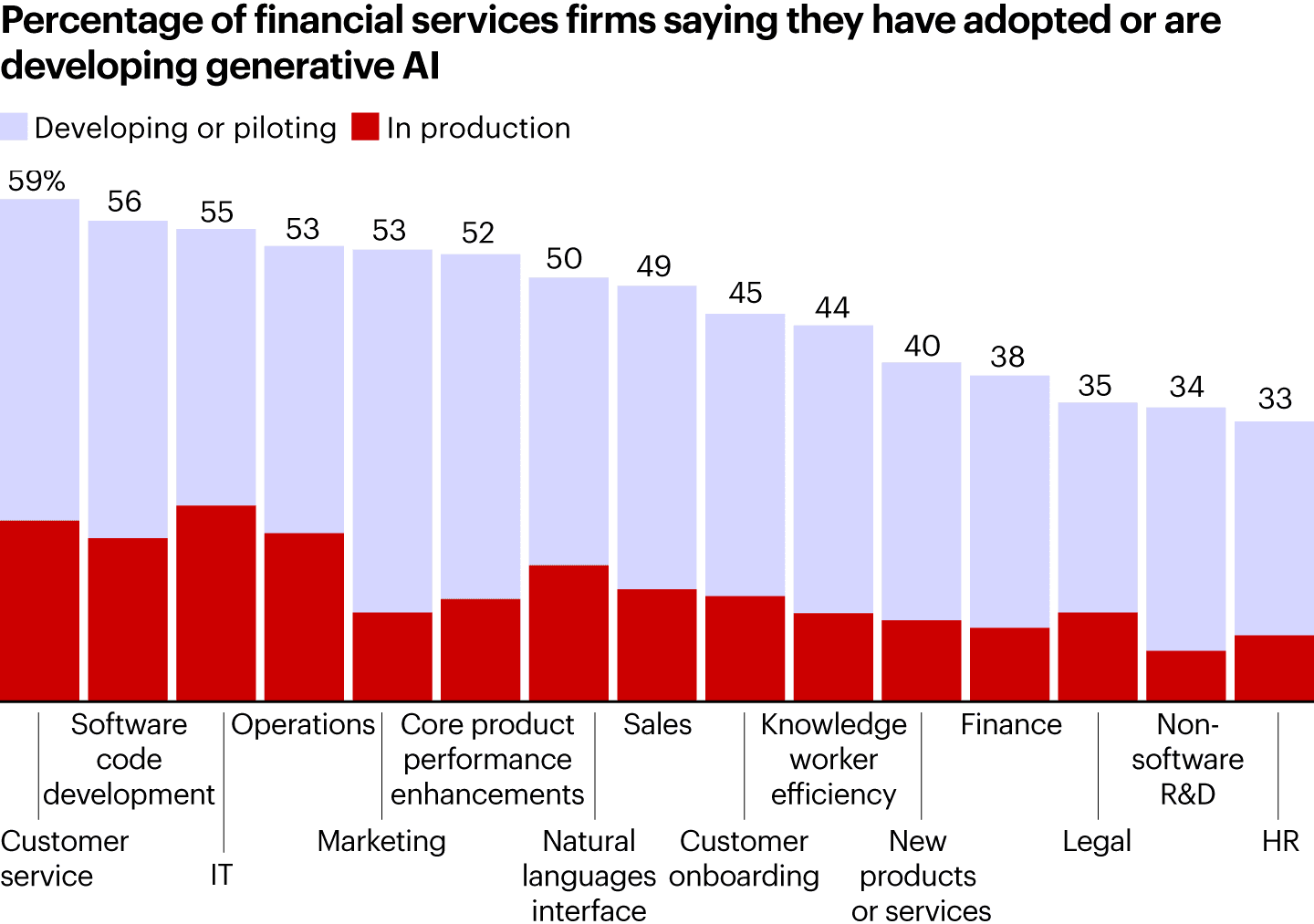
- The highest adoption or active development of generative AI is in customer service (59%), software code development/IT (56%), and operations (55%).
- Mid-tier use cases include marketing (53%), followed by core product performance enhancements (53%), natural-language interfaces (52%), sales (50%), customer onboarding (49%), knowledge-worker efficiency (45%), and new products or services (44%).
- Lastly, the least used sectors are finance (40%), legal (38%), non-software R&D (35%), and HR (33%).
Barriers to Generative AI in Finance
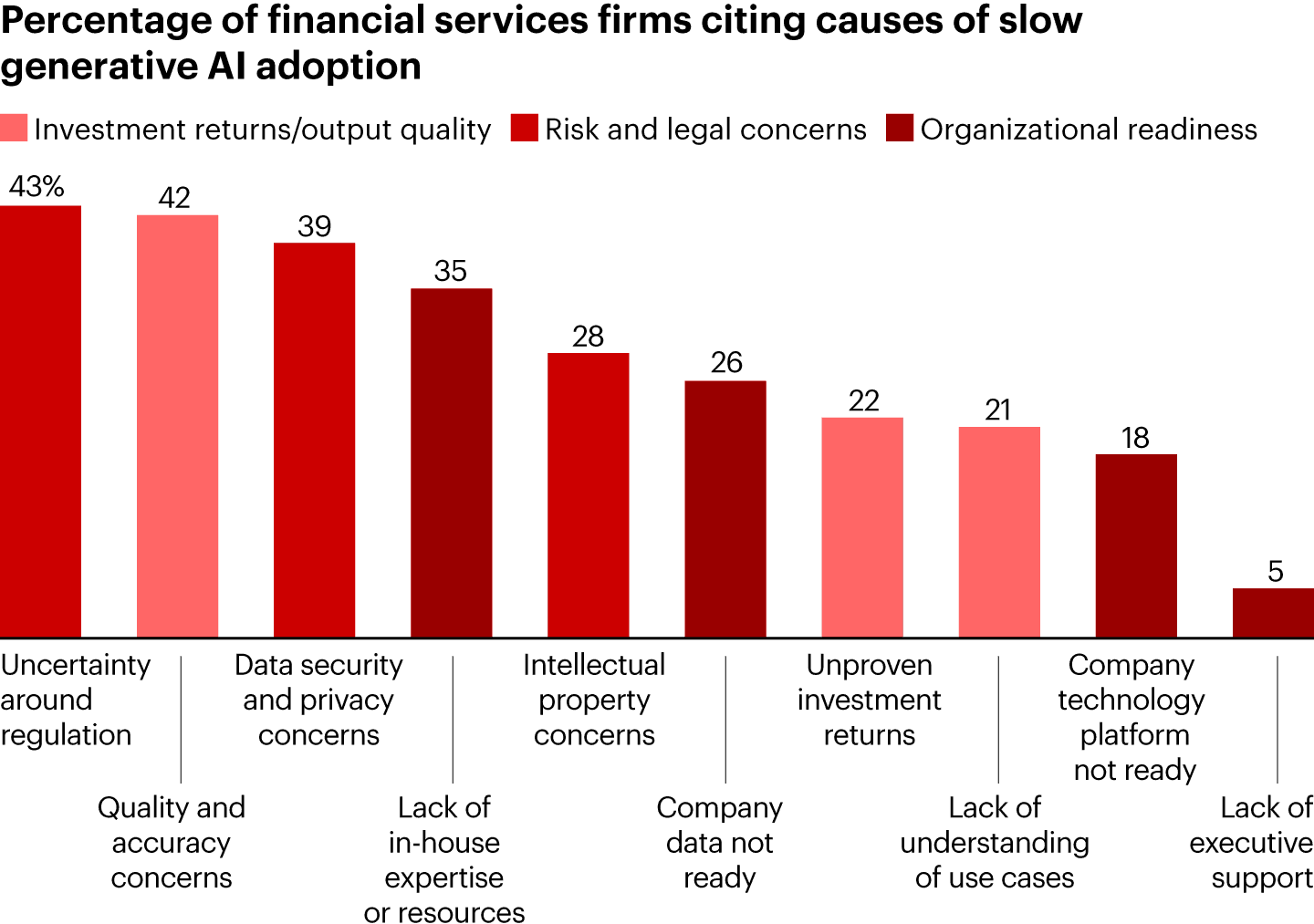
- Uncertainty around regulation is known to be the highest barrier stated by 43% of finance companies, followed by quality and accuracy concerns (42%) and data security & privacy (39%).
- Organizational gaps also bite: lack of in-house expertise/resources (35%), company data not ready (26%), and technology platform not ready (18%).
- Legal and intellectual property risks still loom large, cited by 28% of firms.
- Questions about payback are common, with around 22% saying returns aren’t proven and 21% admitting they don’t fully understand the use cases.
- Only 5% points to weak executive support.
AI/ML for Financial-Crime Detection Analyses
- As mentioned in biocatch.com, across banks and financial services, AI/ML is mainstream, with 94% already using it, while 22% expect adoption within six months, globally.
- Top techniques include advanced machine learning (83%), natural-language processing (72%), and deep learning (67%).
- Key obstacles are data security and privacy (36%), cybersecurity issues (31%), and technology-integration challenges (23%).
- Nearly 69% of decision-makers believe criminals use AI more effectively than banks do.
Main Benefits of AI in the Finance Sector
- NVIDIA’s 2024 financial services survey says 43% of professionals already see operational-efficiency gains from AI, and 42% say it has built a competitive advantage.
- Bain reports that in July 2024, the U.S. financial-services firms see an average 20% productivity lift from generative AI across software development, customer service, and more.
- In the same Bain analysis, firms with USD 5 billion revenue are investing an average of USD 22.1 million in gen-AI in 2024 (USD 100 million), with about 270 FTEs involved; budgets for gen-AI activities and supporting infrastructure average USD 14.5 million, and roughly 70% of respondents cite talent gaps.
- Citing the “State of AI in Financial Services: 2024 Trends,” the SME Finance Forum notes that 46% of financial services organizations are already using LLMs and 43% are already using generative AI.
- BioCatch’s 2024 AI Fraud & Financial Crime Survey finds 83% of banks use advanced ML, 72% use NLP, and 67% use deep learning for financial-crime detection, while 22% plan to start within six months.
- BCG (Oct 2024) says customer service already delivers 24% of AI-generated value in insurance and 18% in banking.
- Insider Intelligence (Business Insider Intelligence) estimates AI could save banks USD 447 billion by 2023, with front- and middle-office accounting for about USD 416B of that total.
- Accenture’s analysis (widely covered by Business Insider/Bloomberg) adds that North American banks could save around USD 70 billion by 2025 from automation/AI.
Key Adoption Rates in the Finance Industry
- AI use in finance has shot up from 45% in 2022 to a projected 85% by 2025, and 60% of companies now run AI in several parts of the business.
- In the U.S., about 91% of banks rely on AI to spot and prevent fraud.
- Worldwide, 80% of banks use AI to streamline how they work and improve day-to-day operations.
Top AI Use Cases in Finance (Excluding China)
| Use case | Company Share |
|
Language tasks with LLMs |
26% |
| Recommenders / “next best action” for customers |
23% |
|
Portfolio optimization and rebalancing |
23% |
| Fraud checks on transactions and payments |
22% |
|
AML & KYC monitoring (anti-money-laundering / identity) |
22% |
| Algorithmic trading |
21% |
|
Chatbots and virtual assistants (conversational AI) |
20% |
|
Marketing performance and targeting |
20% |
|
Making synthetic data at scale |
18% |
| Compliance monitoring and reporting |
17% |
|
Credit/default risk prediction |
15% |
| ESG analysis and reporting |
12% |
|
Metaverse / virtual-world experiments |
12% |
| Claims processing automation |
12% |
|
Geospatial AI (location-based insights) |
10% |
AI Patent Trends in Banking and Fintech
- PatentPC reports that over 60% of financial institutions are putting money into AI and machine learning tools.
- AI patent activity in finance is up more than 250% over the last five years.
- The five biggest global banks together own more than 5,000 AI patents.
- China and the U.S. produce 70% of AI patent filings tied to finance.
- AI in banking and fintech could be a USD 300 billion market by 2030.
- Fraud detection and risk control account for 40% of AI patents in finance.
- JPMorgan Chase has filed 500+ AI patents in the past decade.
- AI-driven trading now powers over 70% of stock market transactions.
- Patents for algorithmic-trading AI have climbed 400% in ten years.
- Fintech AI patent filings have grown about 35% year over year since 2018.
- More than 80% of financial firms use AI for compliance and regulatory checks.
- AI credit risk tools helped lenders to approve more than 20% of loans.
- Around 50% of finance AI patents cover blockchain, smart contracts, or digital payments.
- The United States holds 45% of fintech AI patents, with China at 38%.
AI Agents in Finance Statistics
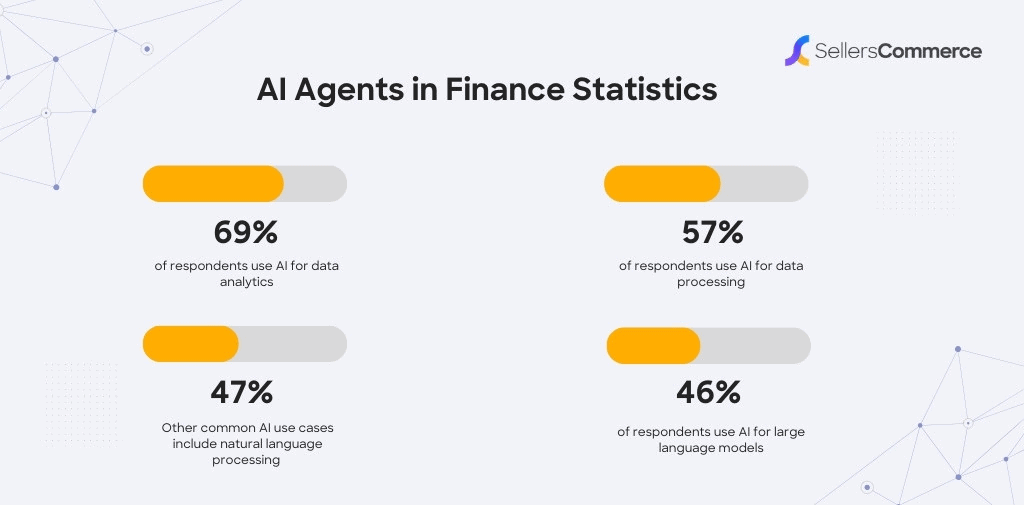
- According to the Seller Commerce survey, around 69% respondents said they use AI mainly for data analytics, with data processing (57%) next.
- Other popular uses are natural language processing (47%) and large language models (46%).
- IDC expects that from 2024 to 2028, financial services will account for about 20% of the increase in global AI spending, as overall outlays climb toward USD 632 billion.
- In the United States, 62% of banks say the work and risk of using customers’ personal data to train AI agents.
- Around 37% of banks point to legal responsibility from AI decisions as a leading concern, higher than the survey average of 32%.
Economic Impact of AI in Finance,
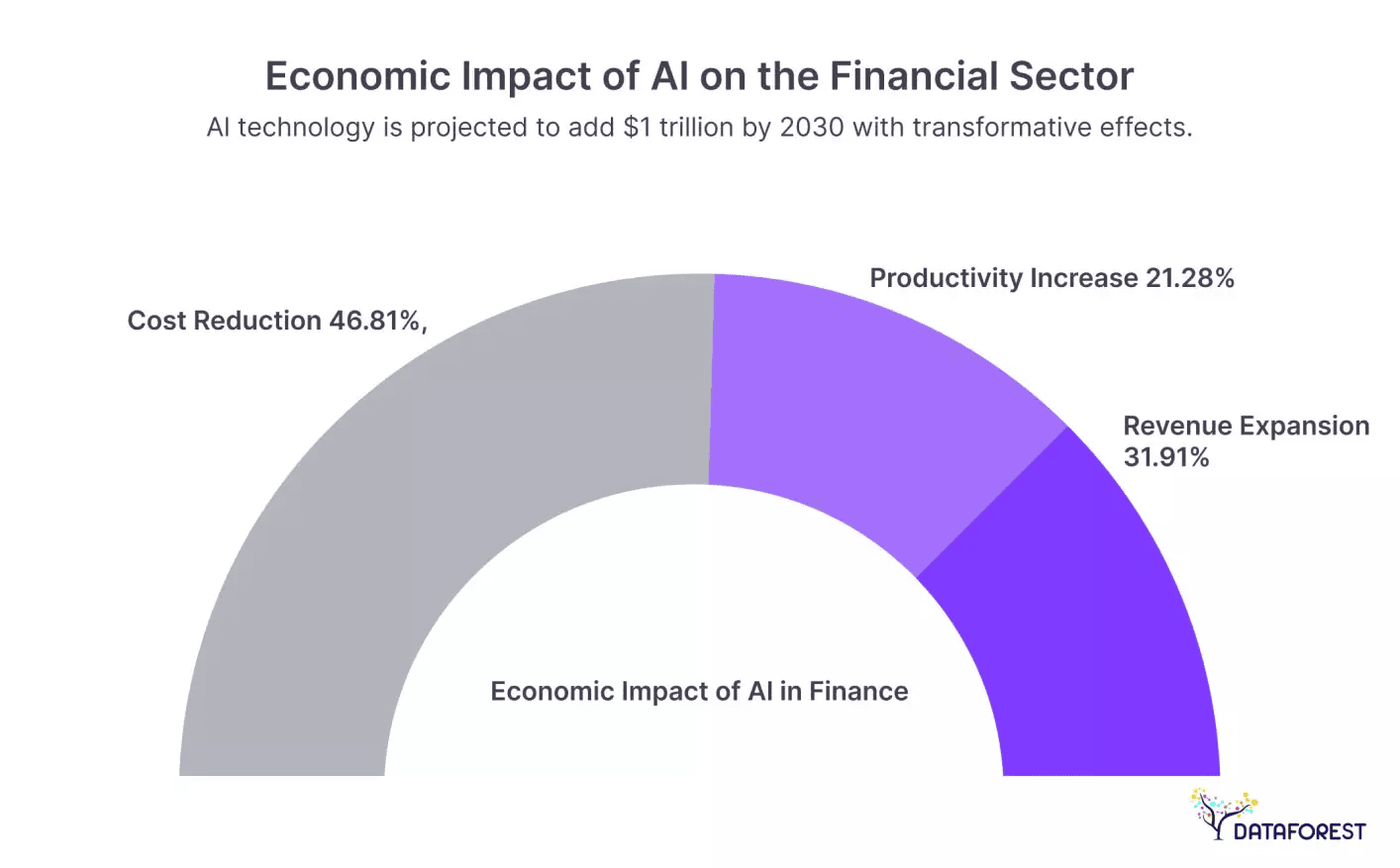
- AI is set to reshape finance by 2030, with analysts projecting about USD 1 trillion in added value.
- Most of the impact comes from lower costs, 46.81%, as automation cuts manual work and errors.
- Better personalization, pricing, and new AI-enabled products expanded its revenue by 31.91%.
- The rest is a higher productivity increase of 21.28%.
Conclusion
AI in finance has moved further beyond experiments to everyday use. Results are clear: less fraud, quicker decisions, lower costs, and better risk signals. Success now depends on discipline. Start with a few high-value cases, prepare clean labelled data, pick edge or cloud for a reason, and measure ROI from day one. Put guardrails in place like monitor models, check bias, protect privacy, and control access.
Train teams and pair domain experts with data pros. Keep a flexible plan: drop what fails, scale what works. Done well, AI delivers safer, faster, profitable finance.
Sources
FAQ.
AI automates fraud detection, credit scoring, compliance, customer support, trading insights, and risk management operations.
Bias and fairness risks, data quality issues, opaque models, regulatory uncertainty, security, integration challenges, and costs.
It really depends on the job: Feedzai for fraud, FICO for underwriting, DataRobot for analytics, GPT-4/Claude for gen-AI, SageMaker/Vertex/Azure for platforms, MLflow for governance, and ModelOp or Databricks for model-risk.
Security depends on robust governance, encryption, access controls, monitoring, compliance frameworks, and continuous testing practices.
Finance AI will soon be everywhere, well-regulated, agentic, real-time, personalized, interoperable, autonomous, secure, and explainable.

Barry Elad is a passionate technology and finance journalist who loves diving deep into various technology and finance topics. He gathers important statistics and facts to help others understand the tech and finance world better. With a keen interest in software, Barry writes about its benefits and how it can improve our daily lives. In his spare time, he enjoys experimenting with healthy recipes, practicing yoga, meditating, or taking nature walks with his child. Barry’s goal is to make complex tech and finance information easy and accessible for everyone.








